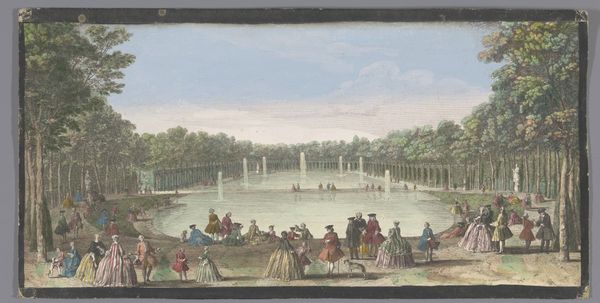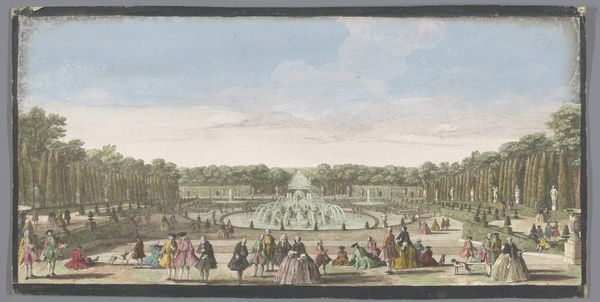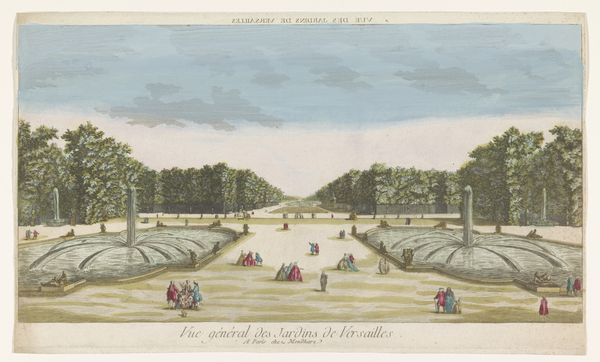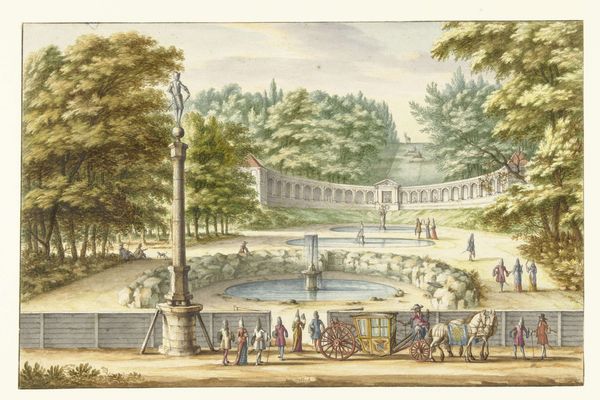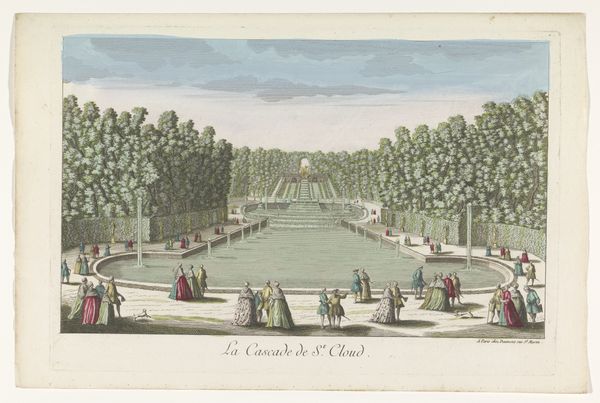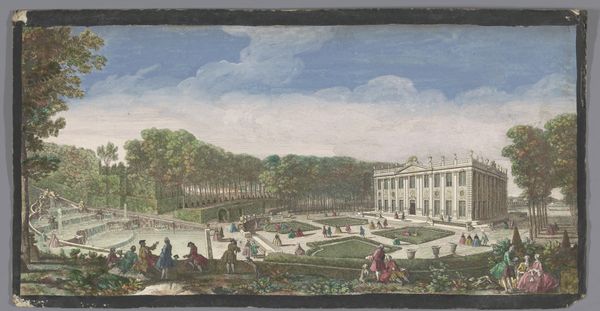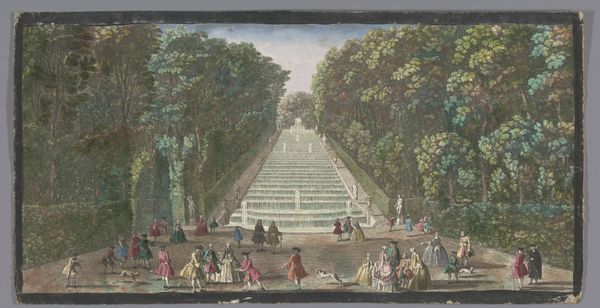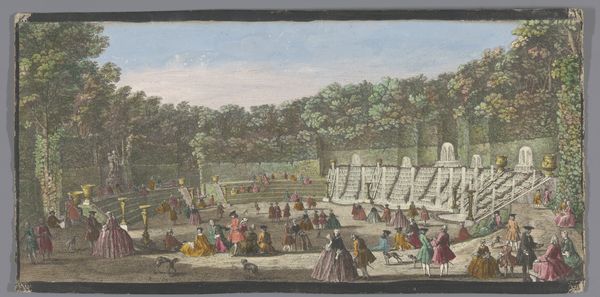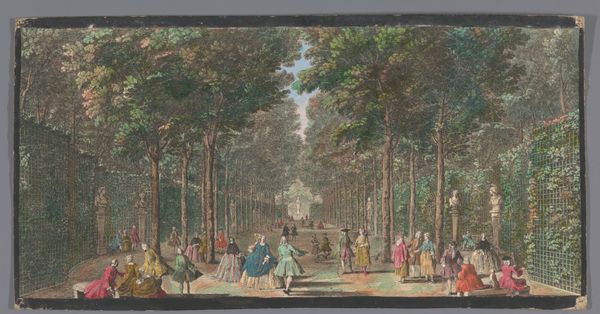
Gezicht op het Grand Canal in de tuin van het Palais de Fontainebleau 18th century
0:00
0:00
anonymous
Rijksmuseum
watercolor
#
garden
#
water colours
#
landscape
#
figuration
#
watercolor
#
coloured pencil
#
genre-painting
#
watercolor
#
rococo
Dimensions: height 228 mm, width 469 mm
Copyright: Rijks Museum: Open Domain
Curator: Here we have an 18th-century watercolor titled "Gezicht op het Grand Canal in de tuin van het Palais de Fontainebleau," held here at the Rijksmuseum. Editor: Oh, it's lovely! A very picturesque scene, quite dreamlike actually, with soft blues and greens that evoke a sense of tranquility. The figures seem almost doll-like. Curator: Indeed. Notice the very evident Rococo stylistic elements--the emphasis on leisure, the pastel palette. But think also of what a piece like this suggests about labor and class. Editor: True, the carefree scene definitely speaks of privilege and wealth. The rendering of clothing, in particular, reflects societal hierarchy and the luxury afforded by the upper classes. It seems as though leisure and play were part of an aristocratic aesthetic in this epoch. Curator: Exactly, and this "genre-painting" also subtly reveals the social order underpinning the Palace itself and the work required to build and maintain such an elaborate estate. You see that canal cutting through the garden’s design with this perfect geometry... Think of all the labor involved. Editor: It's striking how the geometric order, created in this vast landscape, is replicated by those repeating patterns in their clothing. Visually pleasing, sure, but the rigid, identical lines give this painting an uncanny, uncanny effect. Curator: But even within those strict forms, the use of watercolor creates a sense of transience, the fleeting quality of these perfect moments enjoyed at leisure by the upper class. And the very nature of watercolor – its fluidity, its reliance on light – all speaks to this moment in history. Editor: I see what you mean. In essence, the formal harmony of the piece conceals these layers of implied production. It leaves me to consider art's ability to shape, conceal, and unveil the truths behind class. It creates such a complex perspective. Curator: Precisely. Looking closer into the piece, and its function and material origin, shows this aestheticized image hides more about social dynamics than it readily admits. Editor: Well, by emphasizing these features, we start to question the reality of that image, to recognize that art doesn’t merely reflect but also interprets and even hides some truth. Thank you. Curator: You're very welcome! It's so important to remember that form and materials are always socially and politically constructed, revealing hidden labor behind appearances.
Comments
No comments
Be the first to comment and join the conversation on the ultimate creative platform.
